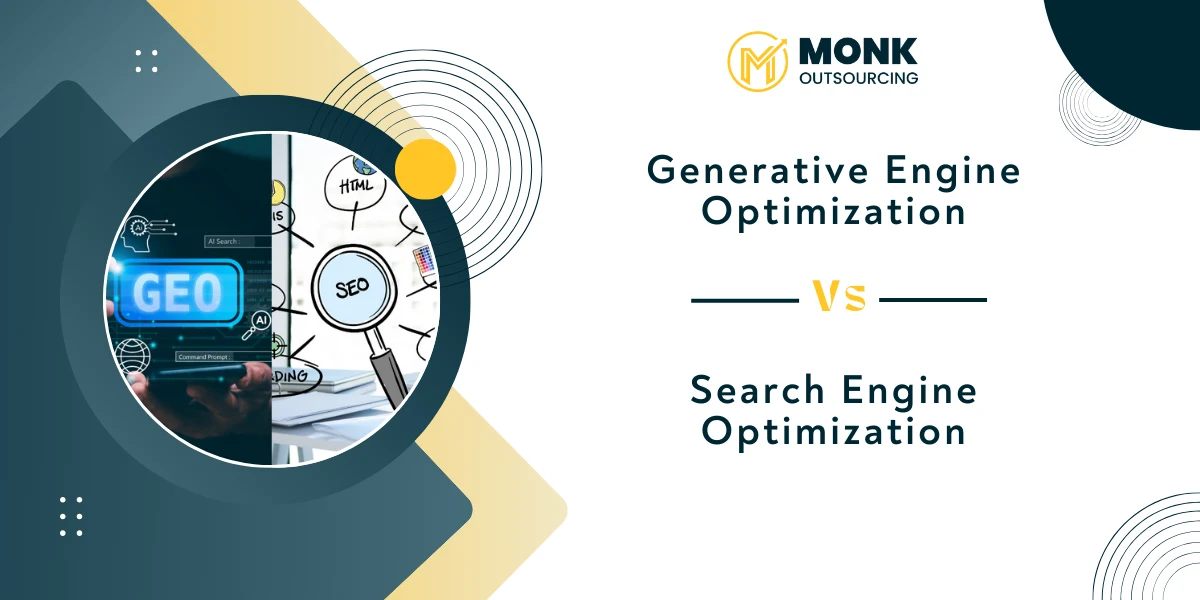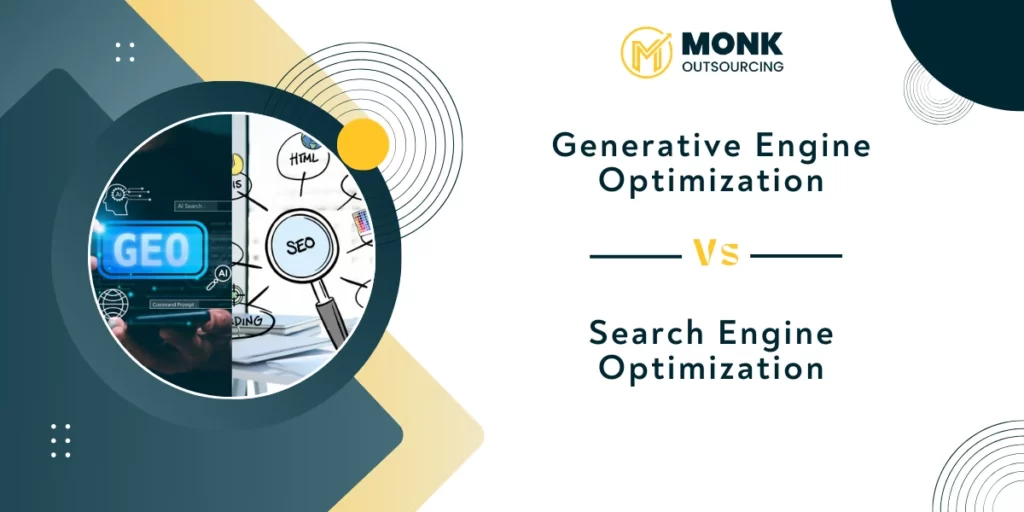With AI reshaping how users discover and interact with information online, a new frontier in digital marketing has emerged: Generative Engine Optimization (GEO). For SEO professionals, content creators, and digital marketers, GEO represents a critical evolution in how we think about search methodologies. While traditional Search Engine Optimization (SEO) is foundational, GEO is rewriting the rules by addressing the needs of AI-driven search engines like ChatGPT, Gemini, and Perplexity AI.
This comprehensive guide explores GEO’s growing role, how it compares with SEO, and how to integrate the two for optimal results. By the end, you’ll understand the tactical differences and leave with actionable insights to future-proof your SEO strategies.
Understanding GEO and SEO
Before we examine their differences, it’s important to establish what both terms encompass within the digital marketing ecosystem.What is Search Engine Optimization (SEO)?
SEO refers to the methodologies and strategies used to drive visibility for websites on traditional search engines like Google and Bing. It includes technical optimization, keyword research, link building, and content-driven strategies designed to improve ranking position on Search Engine Results Pages (SERPs).What is Generative Engine Optimization (GEO)?
GEO, on the other hand, is a cutting-edge approach focused on optimizing content for AI-driven platforms (e.g., ChatGPT or Gemini). These generative engines synthesize rich and nuanced responses from large-scale data to answer user queries comprehensively, relying on contextual relevance rather than ranking links. With GEO, the objective is not only visibility but also inclusion in AI-generated responses to remain competitive in this evolving search ecosystem.
Both SEO and GEO aim to deliver high-quality, accessible content to users, but the methods and outcomes differ significantly.
How GEO Differs From SEO
While there are overlaps between GEO and SEO, understanding their differences is critical to adopting both strategies effectively.
1. Search Focus
| SEO | GEO |
|---|---|
| Primarily optimizes for static search engines that deliver ranked lists of websites in response to a query. | Optimizes content for dynamic AI-driven platforms that create synthesized, conversational responses directly answering a user's intent. |
2. Keyword and Content Strategy
| SEO | GEO |
|---|---|
| Relies on intentional placement of keywords, meta tags, and backlinks to improve visibility. A successful keyword strategy means matching search terms to user needs. | Focuses on providing contextually rich, comprehensive content. Keywords are critical, but contextual depth and structure play a larger role in enabling AI engines to synthesize accurate responses. |
3. User Intent Interpretation
| SEO | GEO |
|---|---|
| Matches search queries directly to high-ranking pages based on relevance. | Uses AI to understand nuanced queries, user context, and intent for more tailored and precise responses. |
4. Technical Optimization
| SEO | GEO |
|---|---|
| Includes classic tactics like page speed, mobile optimization, and schema markup. | Introduces fine-tuned formatting and semantic structure, ensuring the content is accessible to AI engines that prioritize natural language and structured data. |
5. Metrics and Analytics
| SEO | GEO |
|---|---|
| Tracks organic traffic, keyword rankings, and click-through rates as primary performance metrics. | Monitors user behavior, citation frequency in AI-generated responses, and upstream interaction metrics from AI platforms. |
How GEO is Reshaping Content Creation and SEO Strategies?
Generative engines have changed the rules of online visibility. SEO professionals and digital marketers are already adapting their strategies to remain relevant in this AI-augmented search environment.
AI-First Content Creation
AI thrives on context-rich, data-supported content. Content creators must now think beyond ranking individual pages and instead ensure that their work contributes meaningfully to AI-generated answers.
Integration with SEO
While GEO functions differently, it doesn’t render traditional SEO obsolete. Organic search rankings remain essential. GEO builds upon SEO principles while refining output specifically for AI systems.
Hyper-Personalization
Generative engines increasingly rely on hyper-personalization. GEO strategies must account for diverse user intents and create variations that reflect this depth.Practical Tips for Integrating GEO into Your SEO Workflow
1. Conduct Comprehensive Keyword Research
Go beyond traditional keyword analysis. Incorporate long-tail, conversational queries, and voice-search phrases that AI platforms prioritize. Use tools like AnswerThePublic for insights into natural phrasing.2. Stay Focused on Content Structure
- Use clear headings, subheadings, and bullet points.
- Summarize key information within the first few lines of every content section.
- Ensure detailed and well-structured answers for commonly asked questions.
3. Create Context-Aware Content
GEO demands semantically rich, contextually accurate content. Focus on E-E-A-T (Experience, Expertise, Authoritativeness, Trustworthiness) principles while addressing multifaceted user needs in detail.4. Leverage Structured Data
Implement schema markup on your website to make your content easier for AI engines to parse and synthesize into answers for generative queries.5. Test and Monitor Results
Use analytics tools to measure how often your content is cited or appears in AI-generated responses. Refine your strategy iteratively based on these insights.Case Studies of GEO Success
Example 1: An E-Commerce Brand’s Journey into GEO
An e-commerce business specializing in outdoor gear optimized its product descriptions and informational guides for AI-driven search engines. By emphasizing contextual relevance and structured content, their content was frequently cited in responses on generative platforms like Gemini and ChatGPT, improving traffic and customer engagement dramatically.Example 2: Content Publishers and GEO Mastery
A blog publishing company shifted focus toward creating long-form, citation-rich articles that resonated with AI systems. Their articles dominated conversational AI outputs, significantly increasing referral traffic from generative platforms.Deep Dive:- DeepSeek Vs ChatGPT: A Comprehensive Guide
The Future of Search and GEO's Role
GEO is not simply a passing trend; it is a definitive shift in how businesses must approach search and discoverability.
Predicted Developments
- Voice-Activated and Multimodal Searches
With AI’s growing sophistication, platforms will incorporate voice and image recognition into search, requiring content optimized across multiple formats.
- Proactive AI Interaction
Generative systems will become capable of delivering hyper-relevant answers even before the user queries them, demanding deep, predictive optimization.
- More Sophisticated Algorithms
Marketers will need to anticipate further developments in AI algorithms that will demand continuously refined strategies.
Adopting Both GEO and SEO for Optimal Results
The key challenge for SEO professionals in this evolving landscape is balancing efficiency with effectiveness. GEO and SEO should not be viewed as separate entities, but as complementary units of a cohesive strategy.
By integrating GEO into your SEO workflow today, your organization is well-positioned to thrive in the evolving landscape of AI-powered search. Explore GEO strategies, stay informed, and innovate actively.




